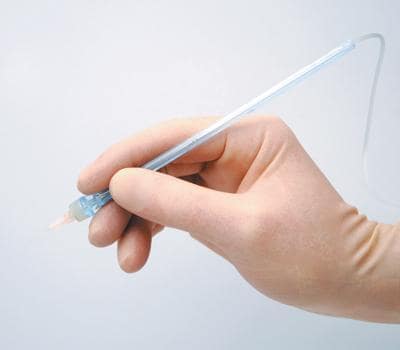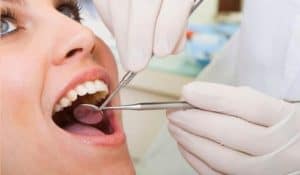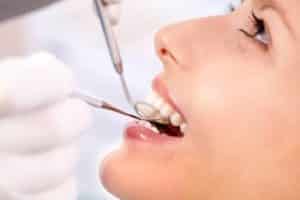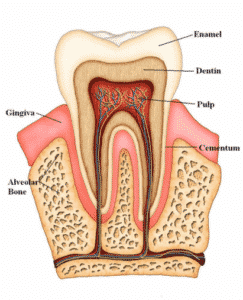
Nothing strikes fear into a dental patient faster than a dentist whipping out a needle as a precursor to a procedure. Even though patients know that the purpose of the needle is to alleviate pain once the anesthetic kicks in, the jab still hurts – but it doesn’t have to be that way.
Dr. David Brusky knows all too well patients’ anxiety over local anesthetic. “I’ll just be talking to a patient about their day, and they’ll ask me – when are you going to bring out the needle?” Dr. Brusky describes it as frustrating because he feels that going to the dentist’s office shouldn’t always have to be associated with pain.
The dentist now possesses the technology that represents a pain-free way to alleviate the discomfort or pain associated with dental procedures.
To ensure complete comfort, Dr. Brusky makes use of a peppermint-flavored compounded topical anesthetic that contains three distinct anesthetic solutions in one. Dr. Brusky will numb the gum tissues near the tooth before any local anesthetic injections take place, ensuring a pain-free procedure from beginning to end.
When it comes time for the local anesthetic, Dr. Brusky makes use of a state-of-the-art dentistry device known as the Wand. This computer-controlled anesthetic delivery system is revolutionizing dentistry while proving to patients that dentistry doesn’t always have to hurt.
Using an ergonomically designed handpiece that looks much like a pen, Dr. Brusky will perform the necessary injections. The Wand is pain-free because injections use the smallest needle available and are delivered slowly, drip by drip, ensuring a comfortable procedure throughout.
Why Does the Traditional Needle Hurt So Much?
Dr. Brusky describes why traditional needles are the least comfortable way to administer local anesthetic.
Dr. Brusky says, “When the local anesthetic is given with a needle and syringe, the patient feels not only the injection but the pressure caused by the anesthetic distending the tissues. That’s why “shots” from the dentist hurt so much. The anesthetic already stings because it’s acidic, but then you have it going in too fast, and the discomfort builds.”
Dr. Brusky further explains that local anesthetic delivered through using an old-fashioned needle and syringe or with the Wand takes much longer to go into effect. That’s why the dentist prefers the Wand with Onset.
Why the Wand and Onset are Preferred by Patients
When Dr. Brusky uses the Wand to deliver local anesthetic, he uses Onset; a sodium bicarbonate solution that makes the anesthetic less acidic. This means that the anesthetic is able to do its job, thoroughly numbing the area, without being accompanied by the stinging sensation.
Furthermore, Onset makes the ions in the solution more bio-available to aestheticize, which means it kicks in much faster (in under two minutes).
Since the solution works so fast and is painless to administer, the dentist can get started on the procedure quicker, which means the patient can be out of the chair and back to school or work that much quicker.
“Everyone wins,” Dr. Brusky says. “I get to prove to patients that comfortable dentistry does exist, and patients can enjoy fully numb treatment sites and expedited dental visits.”
What About Teeth That Don’t Numb So Easily?
Some patients have teeth that are more resistant to traditional local anesthetic delivery methods. For these stubborn teeth, Dr. Brusky uses the X-Tip. This advanced dentistry tool delivers anesthetic more directly to the tooth, ensuring complete numbness. Some of Dr. Brusky’s patients have requested the X-Tip specifically because they possessed teeth that were difficult to anesthetize.
Going to the dentist doesn’t have to painful; and Dr. Brusky is on a mission to prove that fact using topical anesthetic along with the latest dental technology like the Wand, Onset, and the X-Tip.
To learn more about local anesthetic methods and solutions, or to schedule an appointment with Dr. Brusky, contact our office.
About Us: Dr. David Brusky and his compassionate dental team provide a complete menu of dental treatments, from dental cleanings and prevention to full mouth reconstructions for patients in De Pere, Pulaski, Howard, Seymour, and Shawano.






